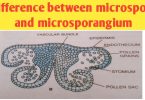What is difference between prokaryotic and Eukaryotic cells l definition and examples of prokaryotic cells l definition and examples of Eukaryotic cells.
You all have you hear about the cells – this is smallest living particles of the universe that carry all physical and biological process of life that’s why it is also known as unit of life, according to structure of nucleus present in the cells, this categorised into two types- prokaryotic cells and Eukaryotic cells.

What is difference between prokaryotic and Eukaryotic cells
How does a prokaryotic cell differ from an Eukaryotic cell?, when you compare between prokaryotic and Eukaryotic cells, types of cell that have membrane bound nuclei are called eukaryotic cells whereas cells that lack a membrane bound nucleus are prokaryotic cells.
Hi guys in this article we know about definition of prokaryotic cells and Eukaryotic cells with examples and compare/differences/contrast between prokaryotic cells and Eukaryotic cells, this question is very important for class 8th, 9th, 10th, 11th and 12th students, those prepare for competitive and annual board examinations.
◆ ALSO READ: HEART ANATOMY, PHYSIOLOGY, LOCATION, DISEASE & TREATMENT
In both prokaryotic and eukaryotic cells, a semi-fluid matrix called cytoplasm occupies the volume of the cells. The cytoplasm is the main arena of cellular activities in both the prokaryotic cells and eukaryotic cells.
Definition of prokaryotic cells
Definition of prokaryotic cells:- the prokaryotic cells is define as types of cell those have naked and false nucleus, essentially a single membrane or one-envelop system which surrounds the cell and there is no membrane enveloping the genetic material. For examples
the prokaryotic cells occur in bacteria Vibrio, Clostridium, Escherichia etc. The prokaryotes are said to form the superkingdom Prokaryotes.
Definition of eukaryotic cells
Definition of eukaryotic cells :- Eukaryotic cell define as cells those comprise of true and membrane bound nucleus, the eukaryotic cell is essentially a double membrane or two envelope system in which primary membrane surrounds the cell and secondary membranes envelope the nucleus and certain other subcellular organelles. For examples the eukaryotic cells occur in protists, fungi, plants and animals. These organisms are called eukaryotes, they are said to form the superkingdom Eukaryotae.
What is difference between prokaryotic and eukaryotic cells
Regarding this, “what is difference between prokaryotic and eukaryotic cells”, prokaryotic cells are represented by bacteria, blue – green algae, mycoplasm and PPLO (Pleuro Pneumonia Like Organisms), generally smaller and multiply rapidly, no well-defined nucleus, genetic material is basic naked and not envelope by a nuclear membrane while eukaryotic cells are represented by protists, fungi, plants and animals, undergoing division to form daughter cells, nuclear material enclosed by a nuclear envelope to form a nucleus distinct from cytoplasm.
Comparison between prokaryotic cells and eukaryotic cells are as follows:-
Prokaryotic cells:-
1. Prokaryotic cell is a single membrane system.
2. Cell membrane bears respiratory enzymes.
3. Cell membrane may infold to form mesosomes.
4. Cell membrane helps in distributing replication products of chromosome between daughter cells.
5. Cytoplasm of prokaryotic cells lacks organelles endoplasmic reticulum mitochondria Golgi apparatus centrosome microfilament microtubule.
6. Sap vacuoles are lacking. Gas vacuole may occur.
7. 70s ribosomes types are found in it.
8. There are no streaming movement of cytoplasm.
9. Endocytosis and exocytosis do not occur.
10. Cell cycle is short taking about 20 to 60 minutes to complete.
11. Mitotic spindle is not found in cell division of prokaryotic cell.
12. Cells are haploid.
13. Transcription and translation occur in the cytoplasm.
14. Protein synthesis takes place in the the cytoplasm only.
15. There is no nucleous found in it.
16. DNA is circular in prokaryotic cell.
17. DNA occurs in the cytoplasm only.
18. Replication of DNA occurs continuously throughout cell cycle.
19. Plasmid and pilli occur in many prokaryotic cells.
20. Some prokaryotic cells are capable of nitrogen fixation, Rhizobium bacteria.
21. Most prokaryotes are nonsexual organisms.
Eukaryotic cells:-
1. A eukaryotic cell is a double membrane system.
2. Cell membranes lacks respiratory enzymes.
3. Cell membranes does not form mesosomes.
4. Cell membrane has no role in distributing replication products of chromosome between daughter cells
5. Karyotic cell cytoplasm contains organelle endoplasmic reticulum, mitochondria, Golgi apparatus, lysosomes, centrosome, microtubules and microbodies.
6. Sap vacuoles are common.
7. 80S types of ribosomes are found in it.
8. Cytoplasm shows streaming movement.
9. Endocytosis and exocytosis occur in many protists animal cells.
10. Cell cycle is long taking about 12 to 24 hours to complete.
11. Mitotic spindle is formed in cell division of eukaryotic cells.
12. Cells are typically diploid. Halploid cells also occur.
13. Transcription and translation occur in nucleus and cytoplasm respectively.
14.Protein synthesis occur in the cytoplasm of mitochondria and plastids.
15. One or more nucleoli occur within the nucleus.
16. Nuclear DNA is linear.
17. DNA occurs in the nucleus as well as in mitochondria and chloroplast.
18. Replication of DNA occurs during S phase of cell cycle only.
19.There are no plasmids and pili in eukaryotic cells.
20.There is no eukaryotic cell which is capable of nitrogen fixation.
21.Most eukaryotes are having sexual mode of reproduction.
Conclusions:-
The differences between Prokaryotic cells and eukaryotic cells classification is based on three main features organization of biomembranes, variety of cytoplasmic organelles, and complexity of nuclear material.







Leave a Comment